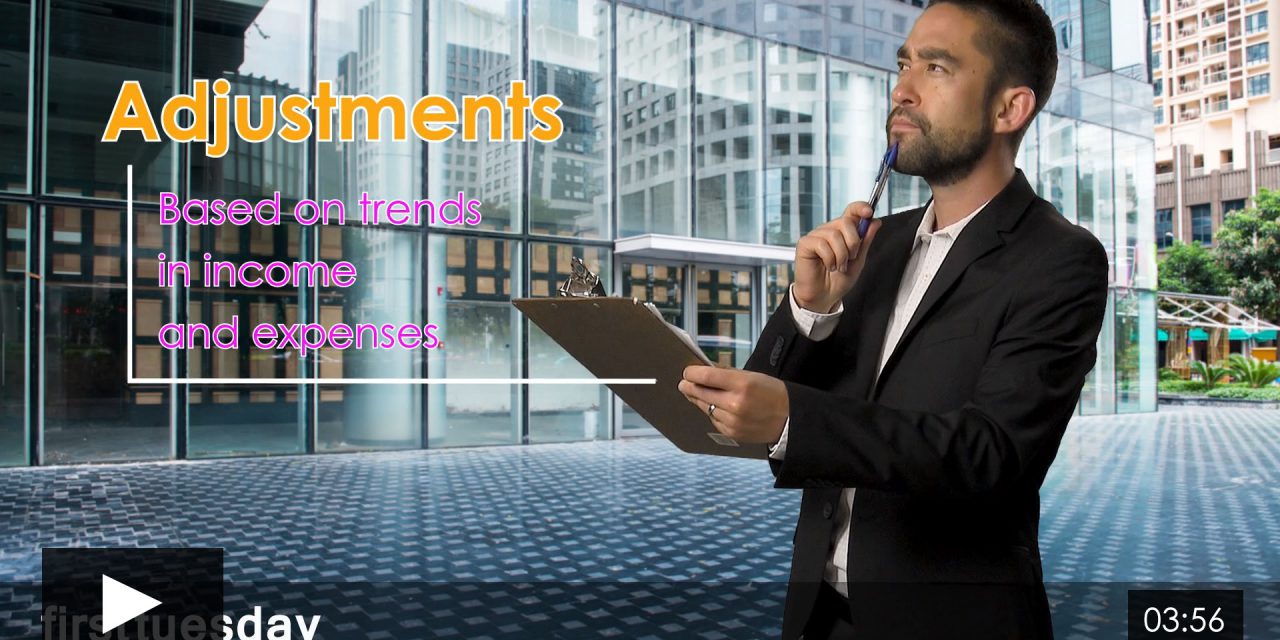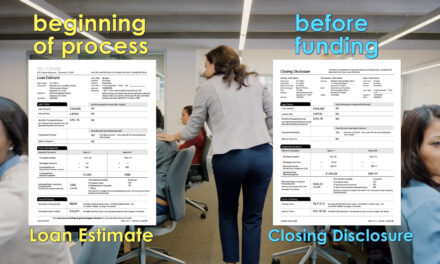For the prior video in this series covering a buyer’s agent’s higher level of reliability when expressing an opinion to their buyer, click here.
Estimates relating to income and/or expenditures
Nearly every transaction offers agents the opportunity to provide estimates for their clients or the other principals involved. Estimates include:
- approximations;
- predictions;
- pro-forma statements;
- anticipated expenditures; and
- contemplated charges.
Estimates relate to income and/or expenditures, such as exist in:
- seller’s net sheets [See RPI Form 310];
- buyer’s cost sheets [See RPI Form 311];
- operating cost sheets for owner-occupied properties;
- Annual Property Operating Data Sheets (APODs) on income properties [See RPI Form 352];
- mortgage origination or assumption charges;
- lender impounds;
- rent schedules (rolls) [See RPI Form 352-1];
- repair costs for clearances; and
- any other like-type predictions of costs or charges.
Estimates by their nature are not facts. The amounts estimated have not yet actually occurred. The amount estimated will become certain only by its occurrence in the future. The amount actually experienced may or may not equal the amount estimated.
A document entitled an “estimate” is typically based on the actual amount currently experienced. Thus, estimates are expected to be fairly accurate in amount, not just guesswork. Words used in titles such as “contemplated,” “pro-forma,” “anticipated” or “predicted” indicate something less than an accurate estimate, and provide less basis for a buyer to rely.
Opinions as projections or forecasts
Opinions voiced by agents about an income property’s future performance are either projections or forecasts.
A projection is prepared by a seller’s agent on an income property to represent its annual operations. The data is set out in an APOD sheet handed to prospective buyers to induce them to purchase the property. The data entered on the APOD is a projection based exclusively on the income and expenses actually incurred by the owner/seller of the property during the preceding 12-month period. [See RPI Form 352]
The amounts experienced by the seller during the past year are projected to occur again over the next year. However these amounts are adjusted by the agent for any trends in income and expenses reflected by information currently available or known to the agent.
No estimations, contemplations or use of figures other than those experienced by the owner are used as a basis to prepare the projection, except for adjustments to reflect changed conditions known (or should be known due to readily available facts).
A forecast requires the knowledge and analysis of an anticipated change in circumstances which will influence the future income, expenses and operations of a property. These anticipated changes are distinct from trend factors used for projections.
Forecasts anticipate future changes in income and expense the preparer of the forecast believes will probably occur under new or developing circumstances.
Changes in circumstances considered in a forecast include:
- new management;
- rent increases up to current market rates;
- elimination of deferred maintenance and replacement of obsolete fixtures/appliances;
- changes in rent control ordinances;
- new construction adding to the supply of competing income properties;
- foreclosures adding properties to an illiquid market;
- commodity market prices (natural gas, water, fuel oil, electricity, etc.);
- local and state government fiscal demands for revenue and services;
- federal monetary policy effects on short- and long-term rates;
- demographics of increasing/decreasing population density in the area immediately surrounding the property;
- traffic count changes anticipated;
- zoning changes reducing, altering or increasing the availability of comparable competitive properties;
- government condemnation, relocation or redevelopment actions;
- changes in the local employment base of employed individuals;
- on-site security measures to prevent crime;
- the age and condition of the major components of the structure;
- local socio-economic trends; and
- municipal improvement programs affecting the location of the property.
Related article:
Material facts and your opinions – liability exposure minimized














